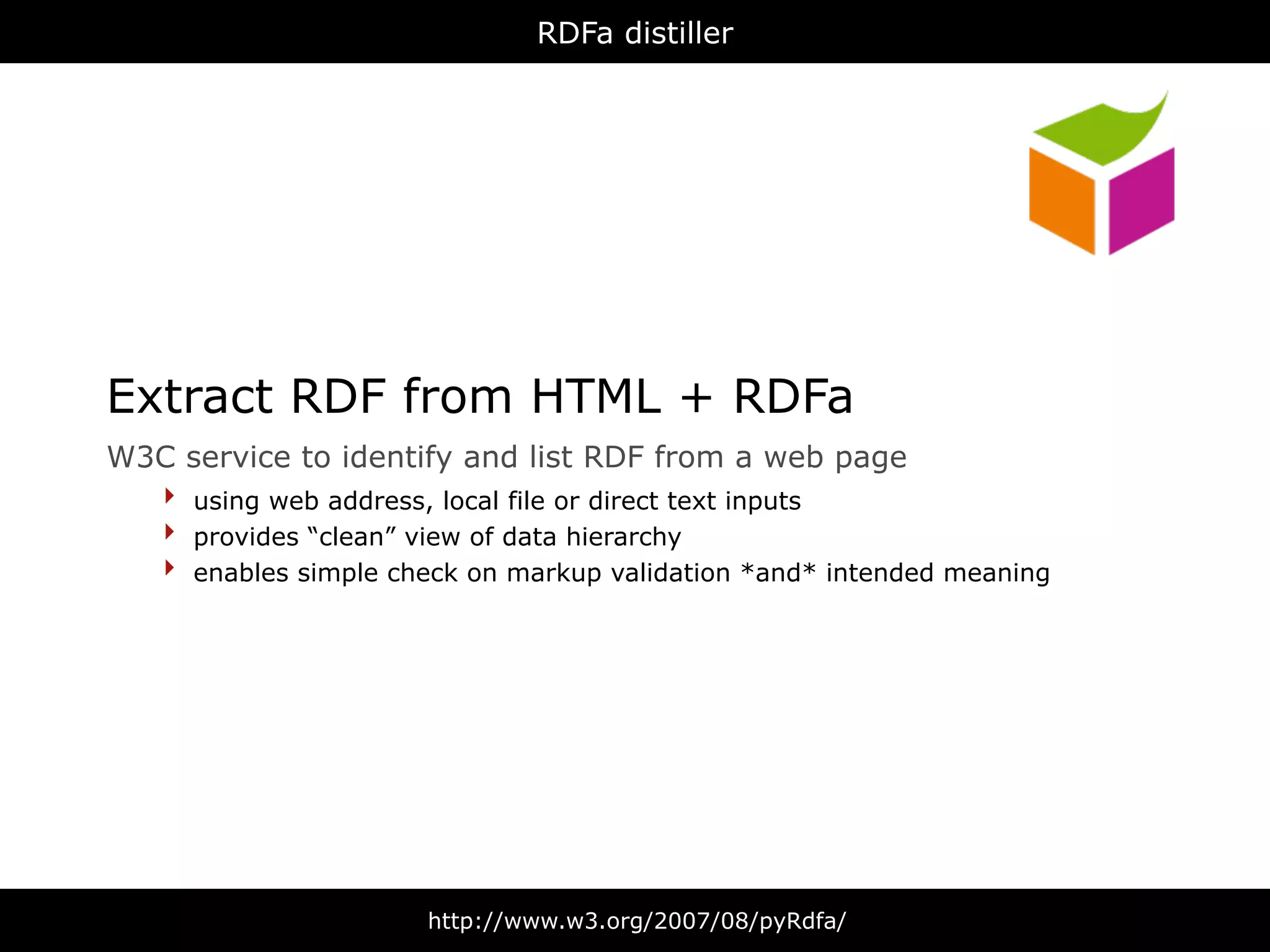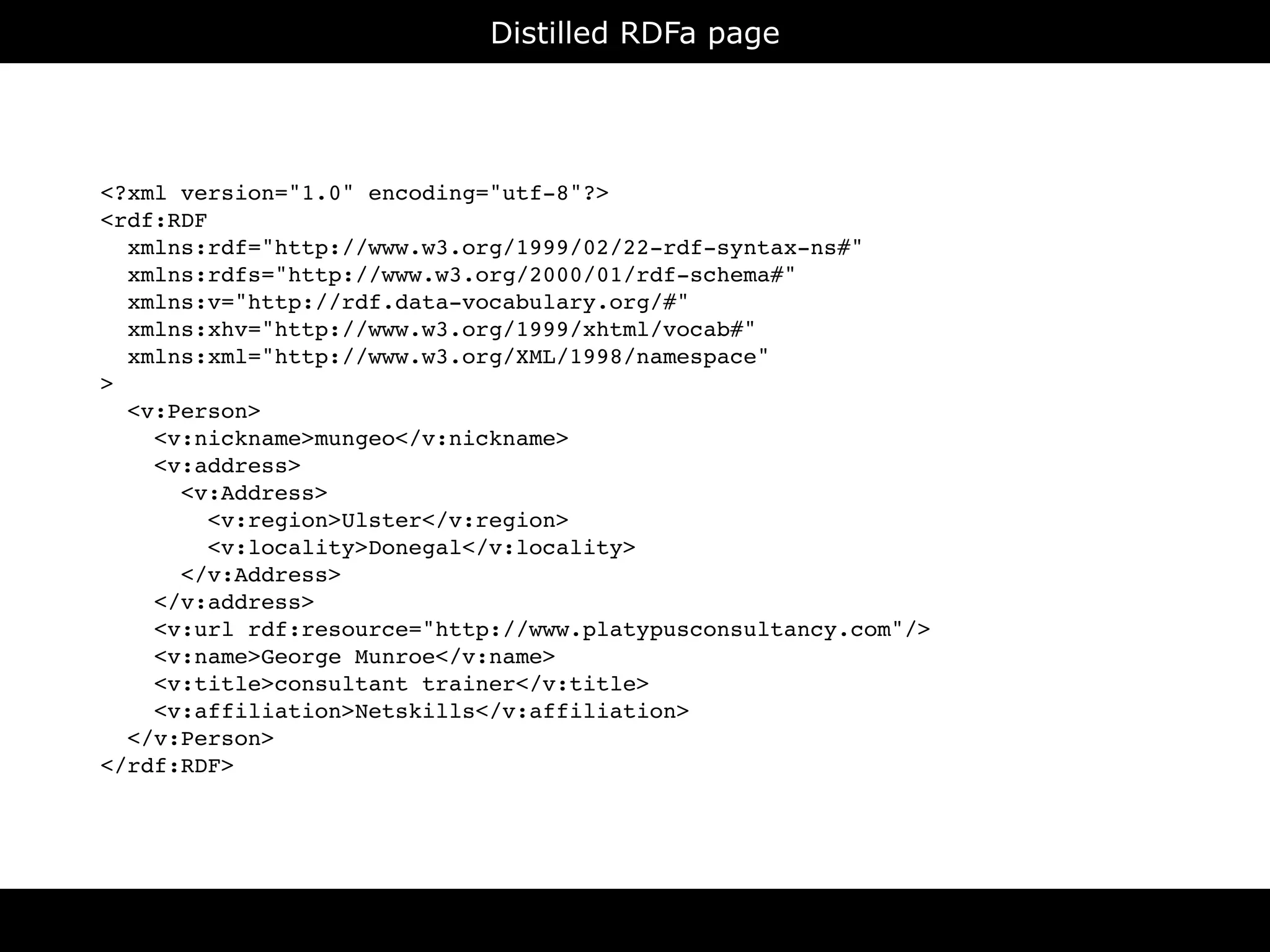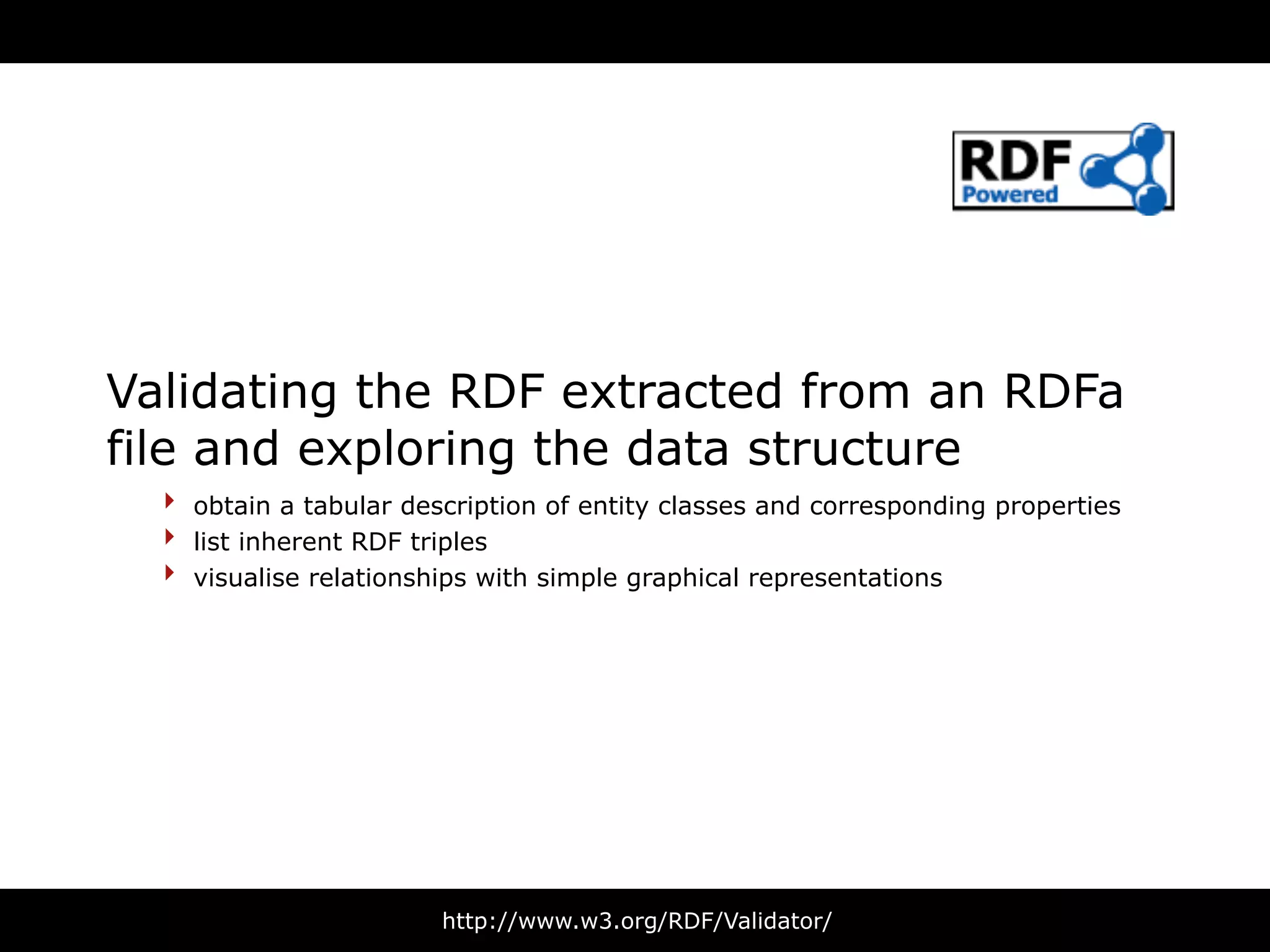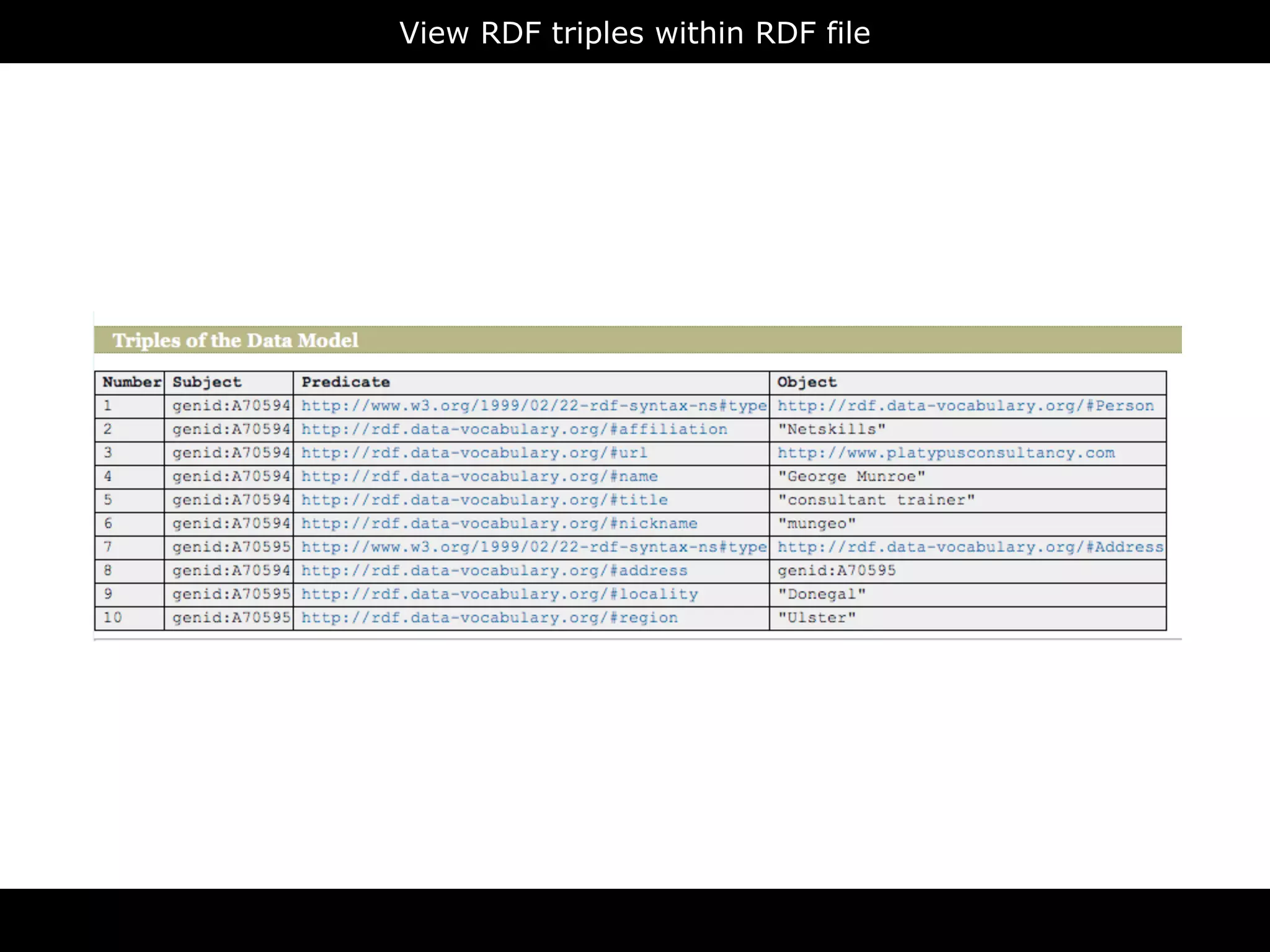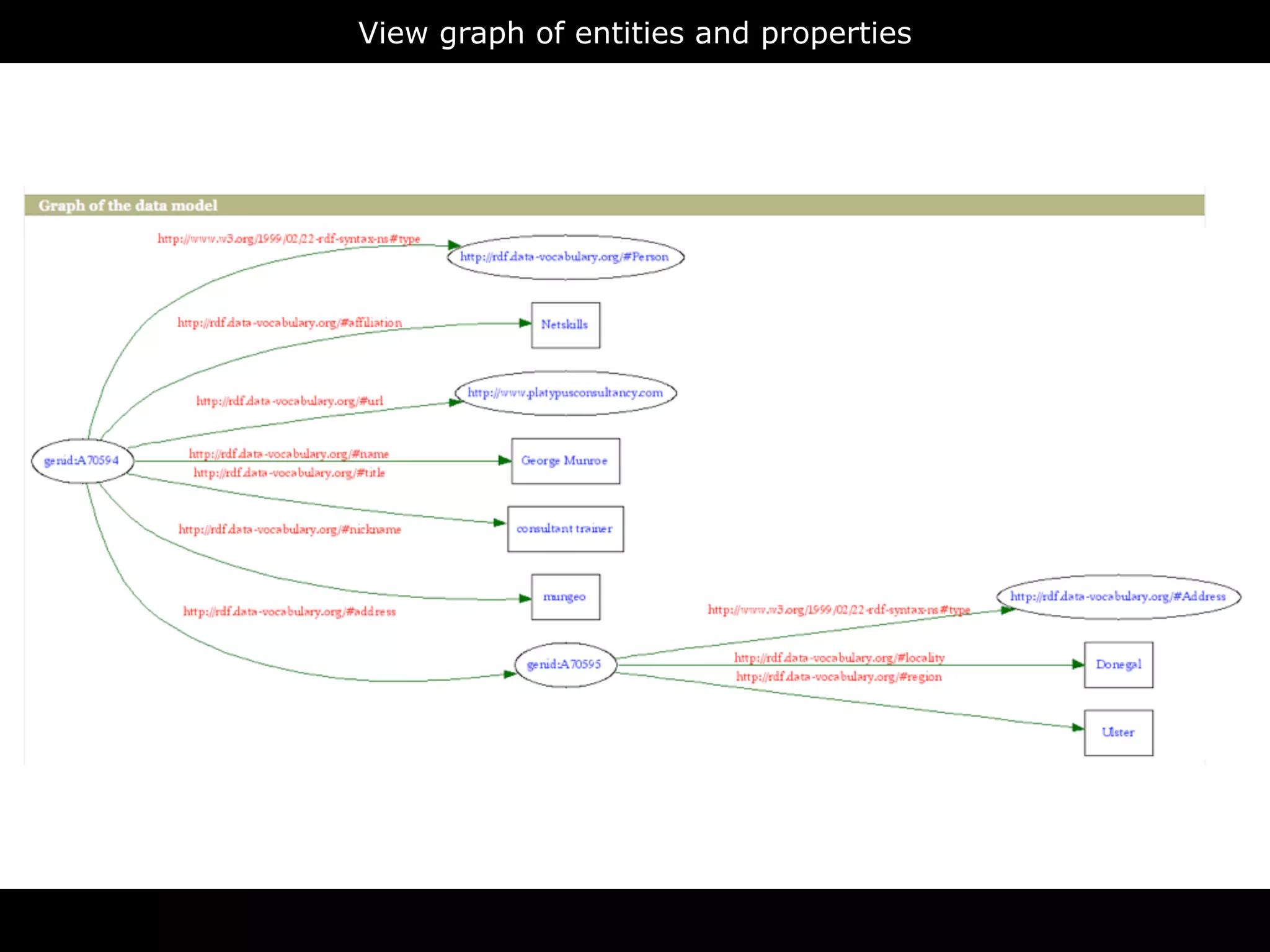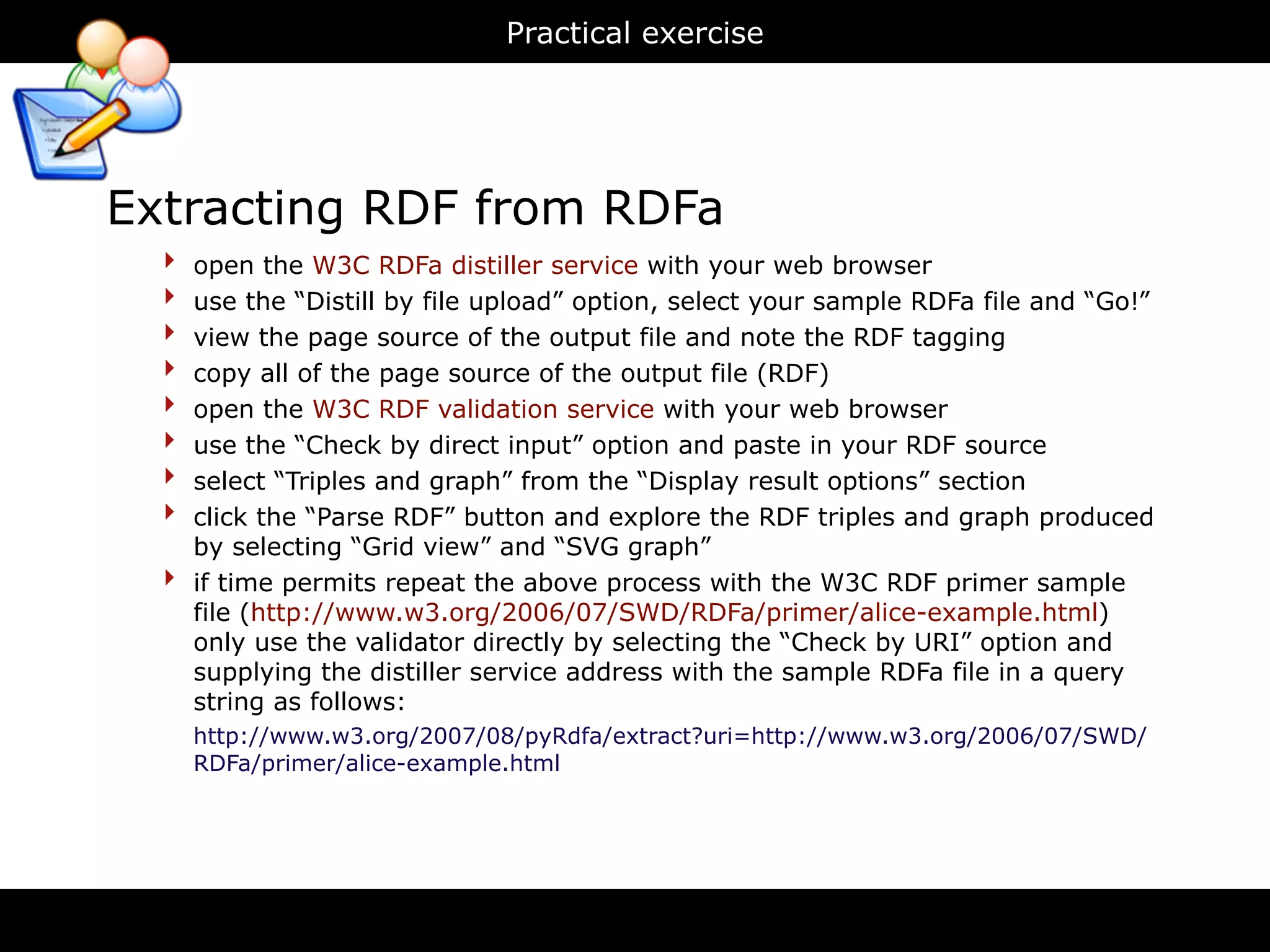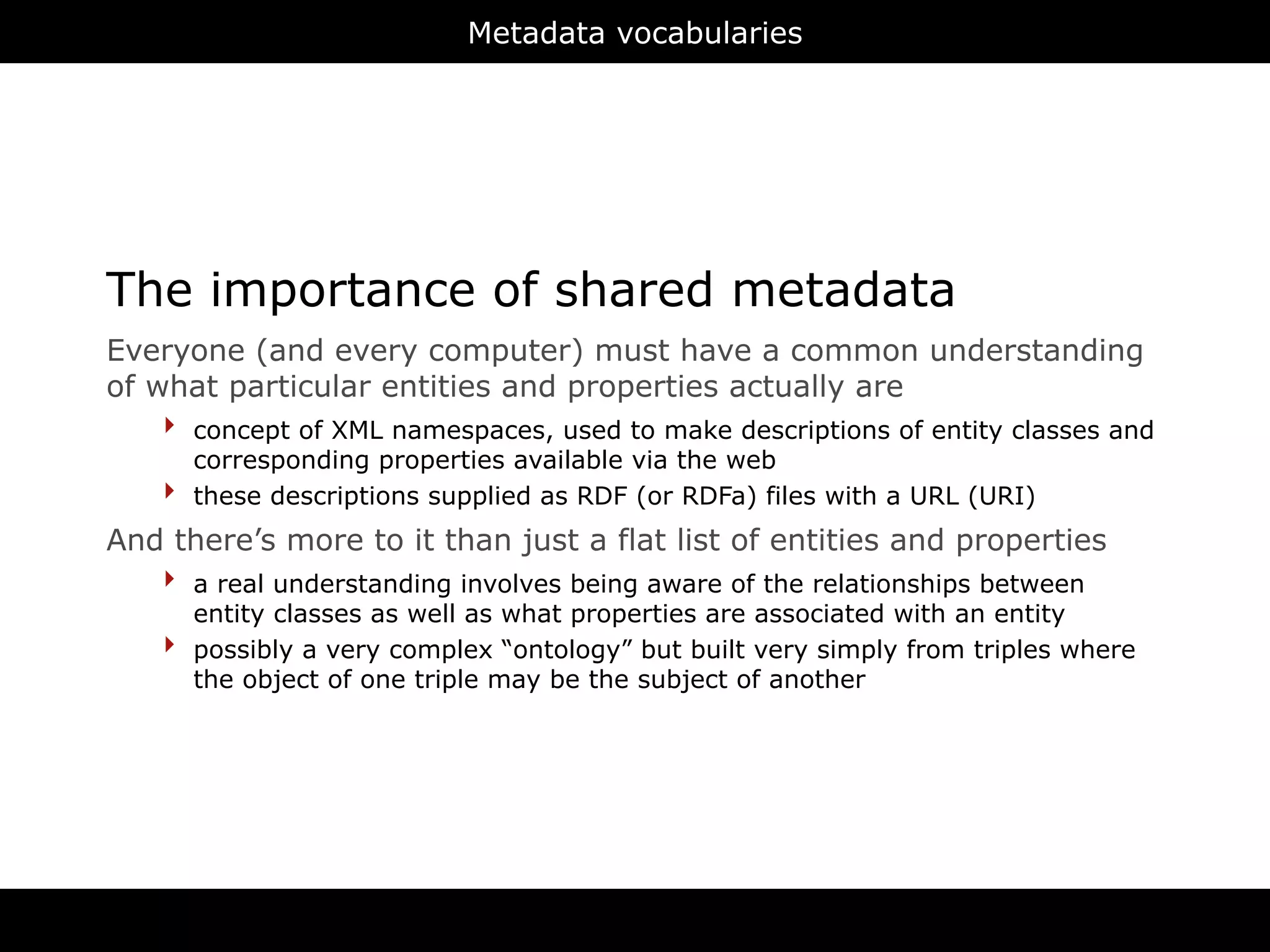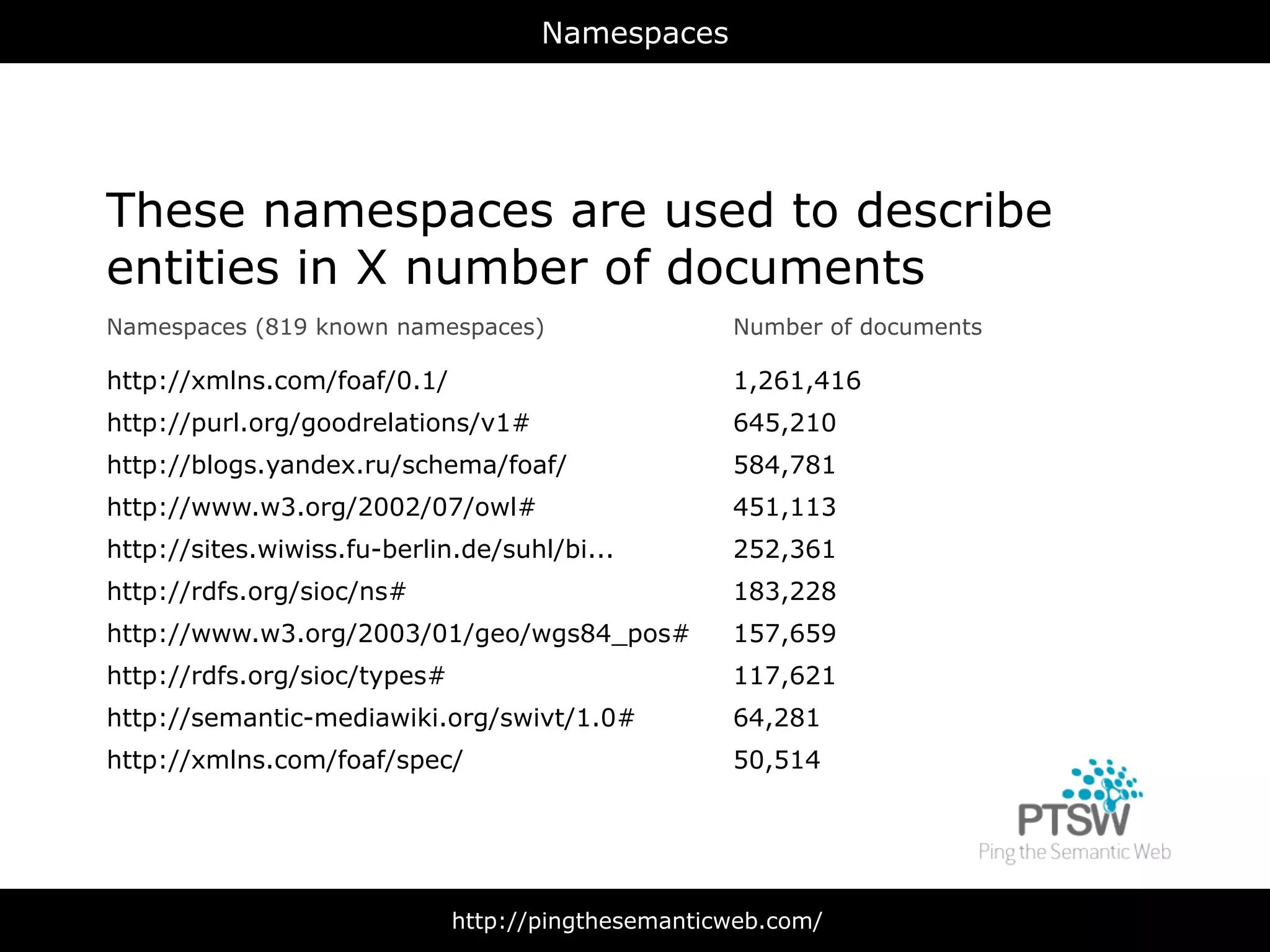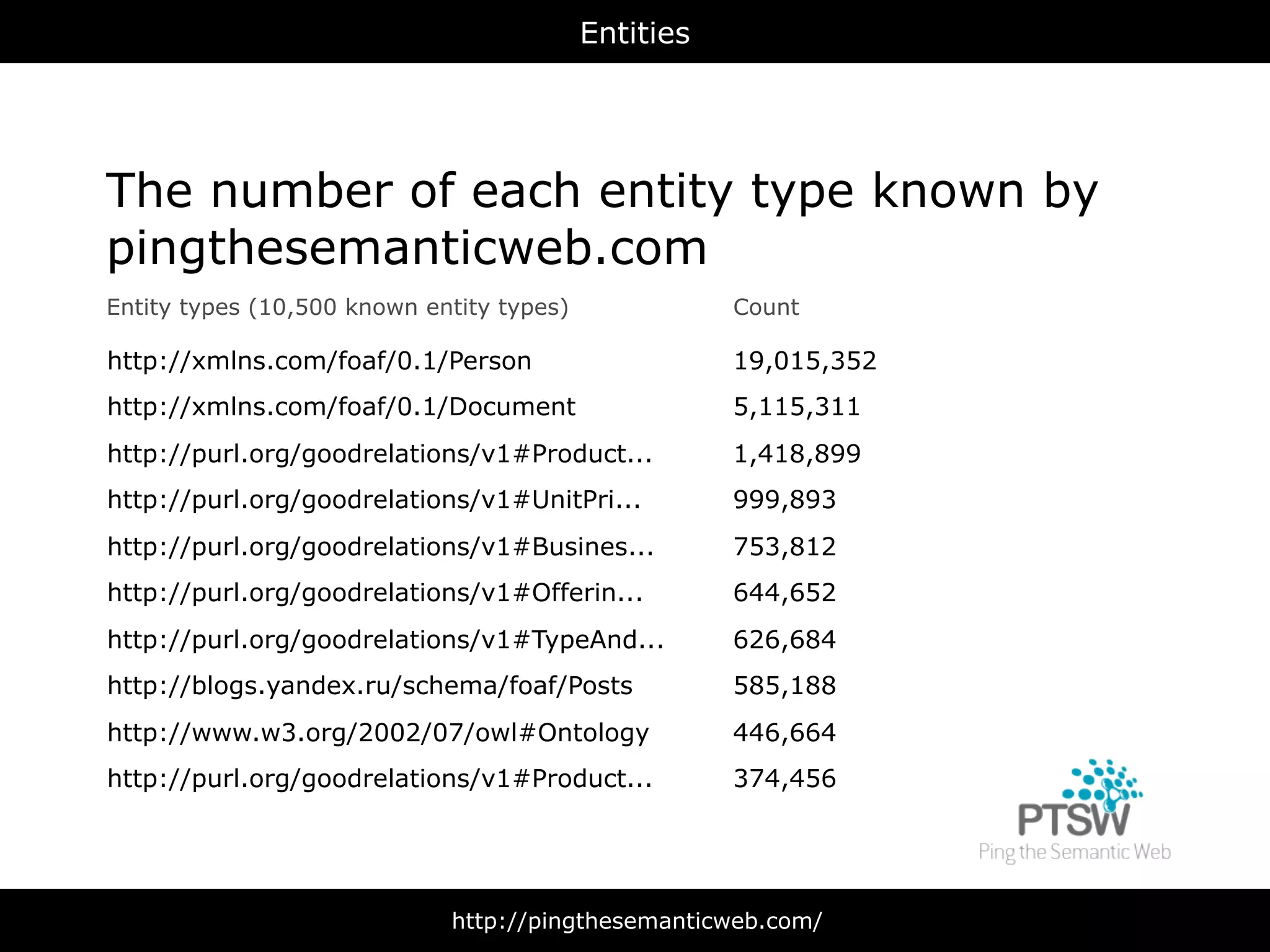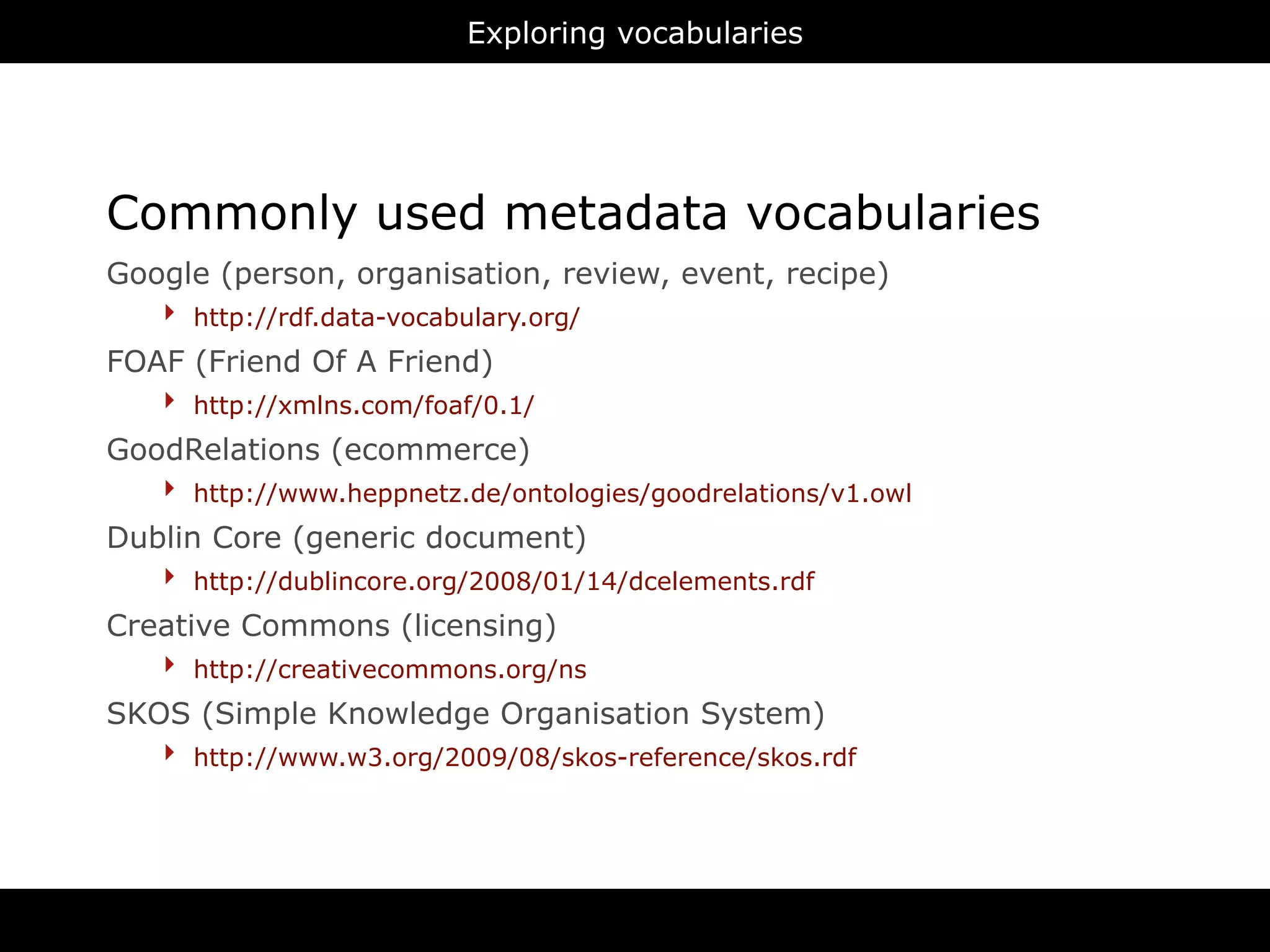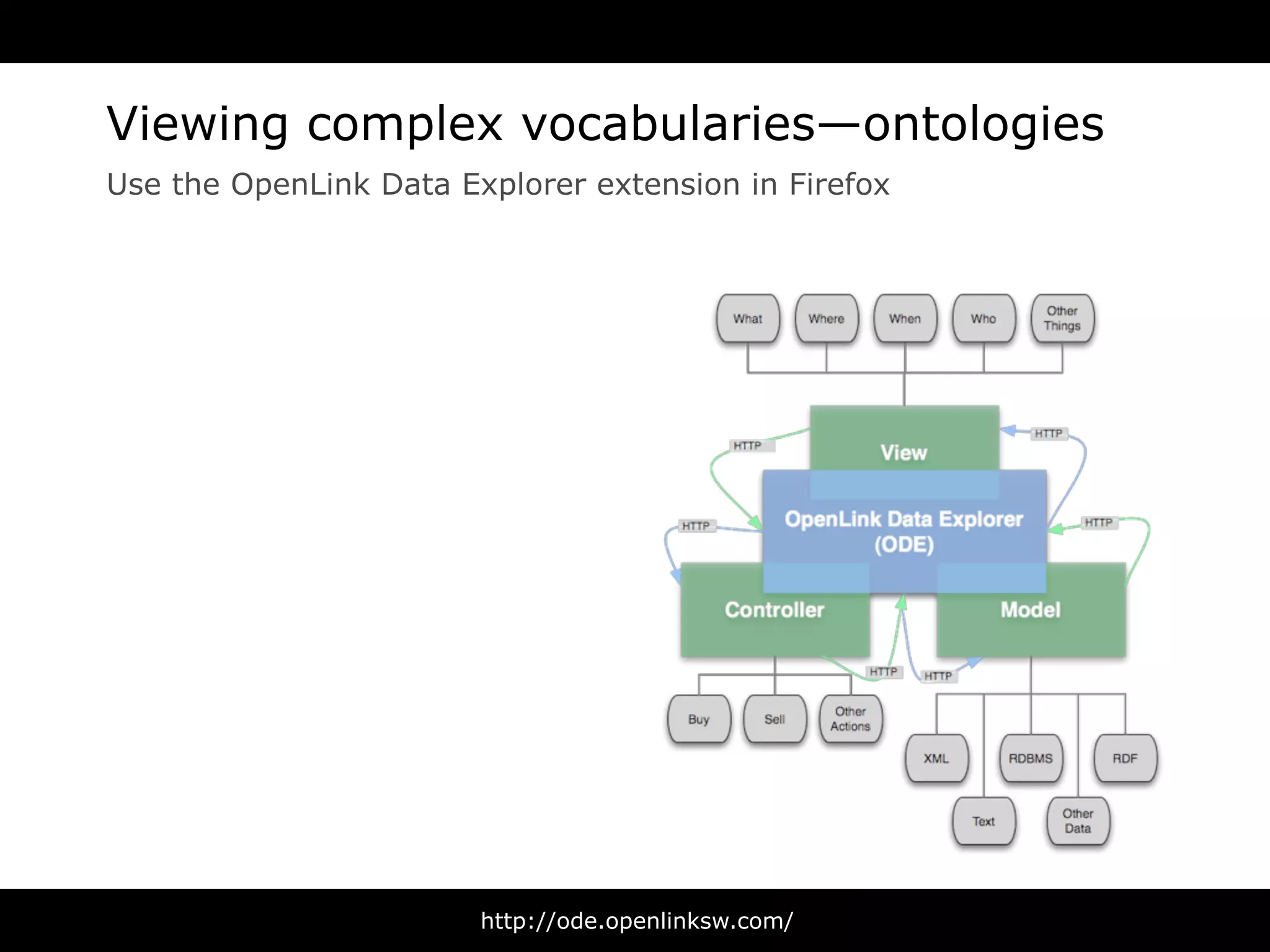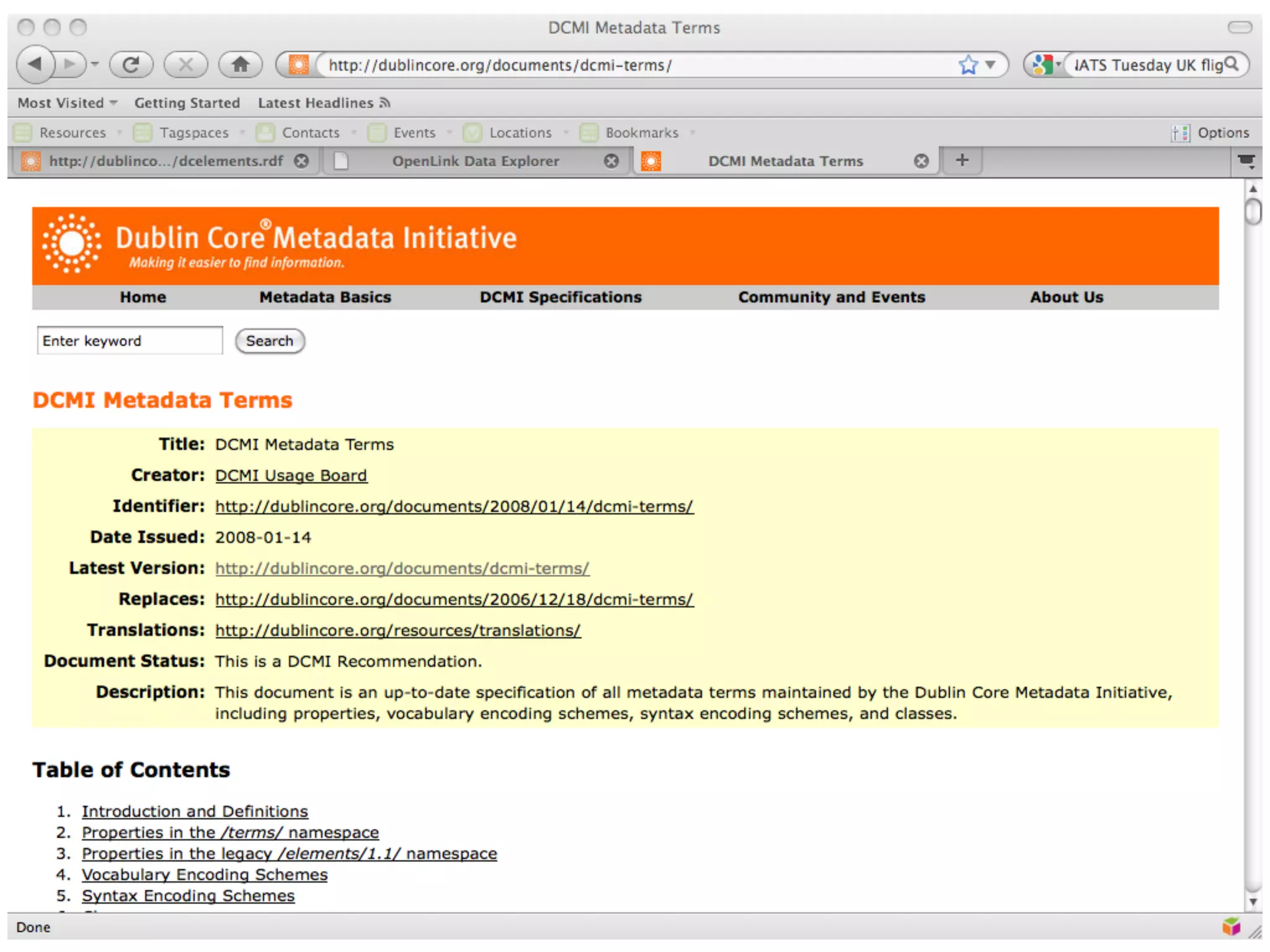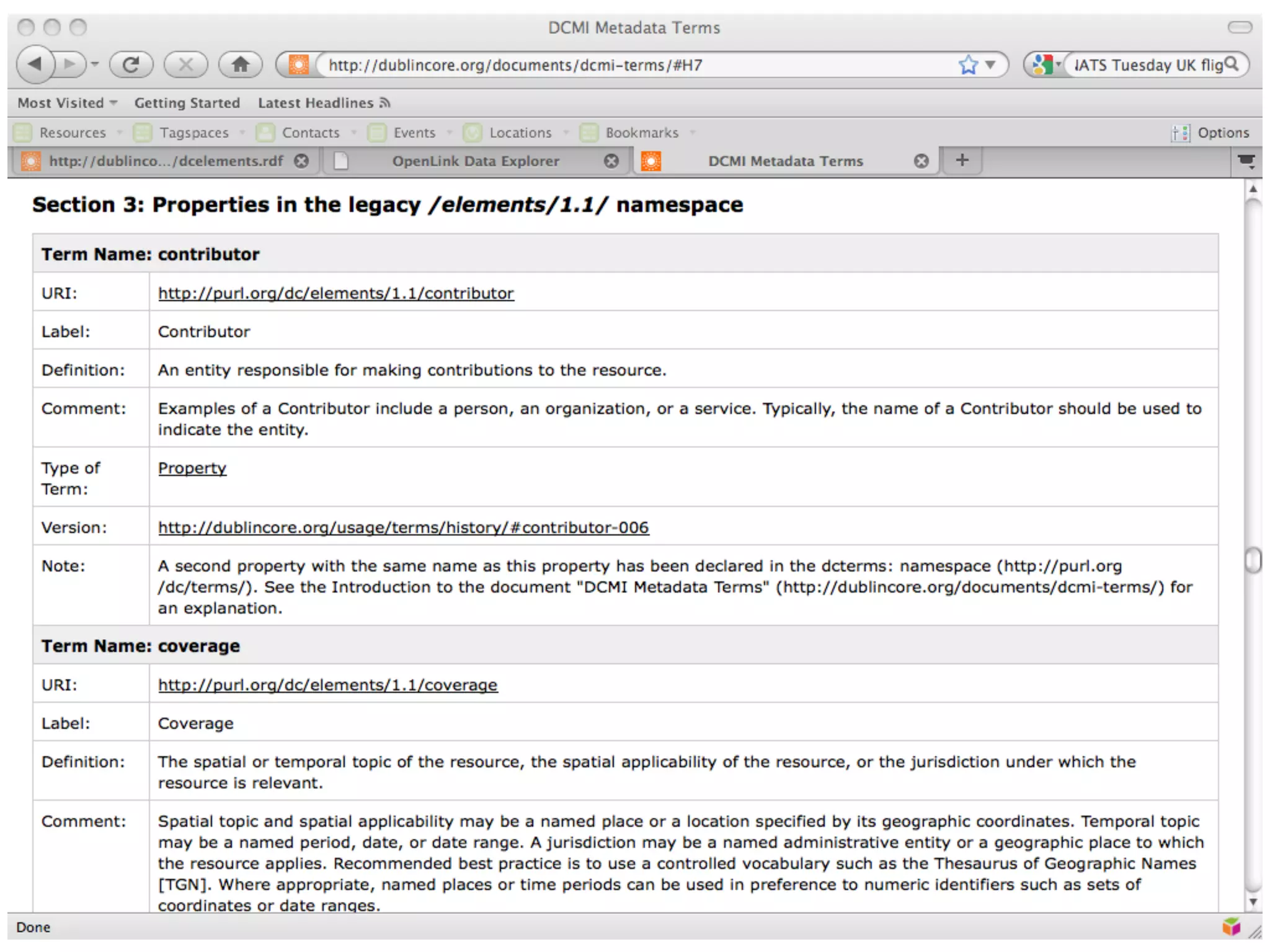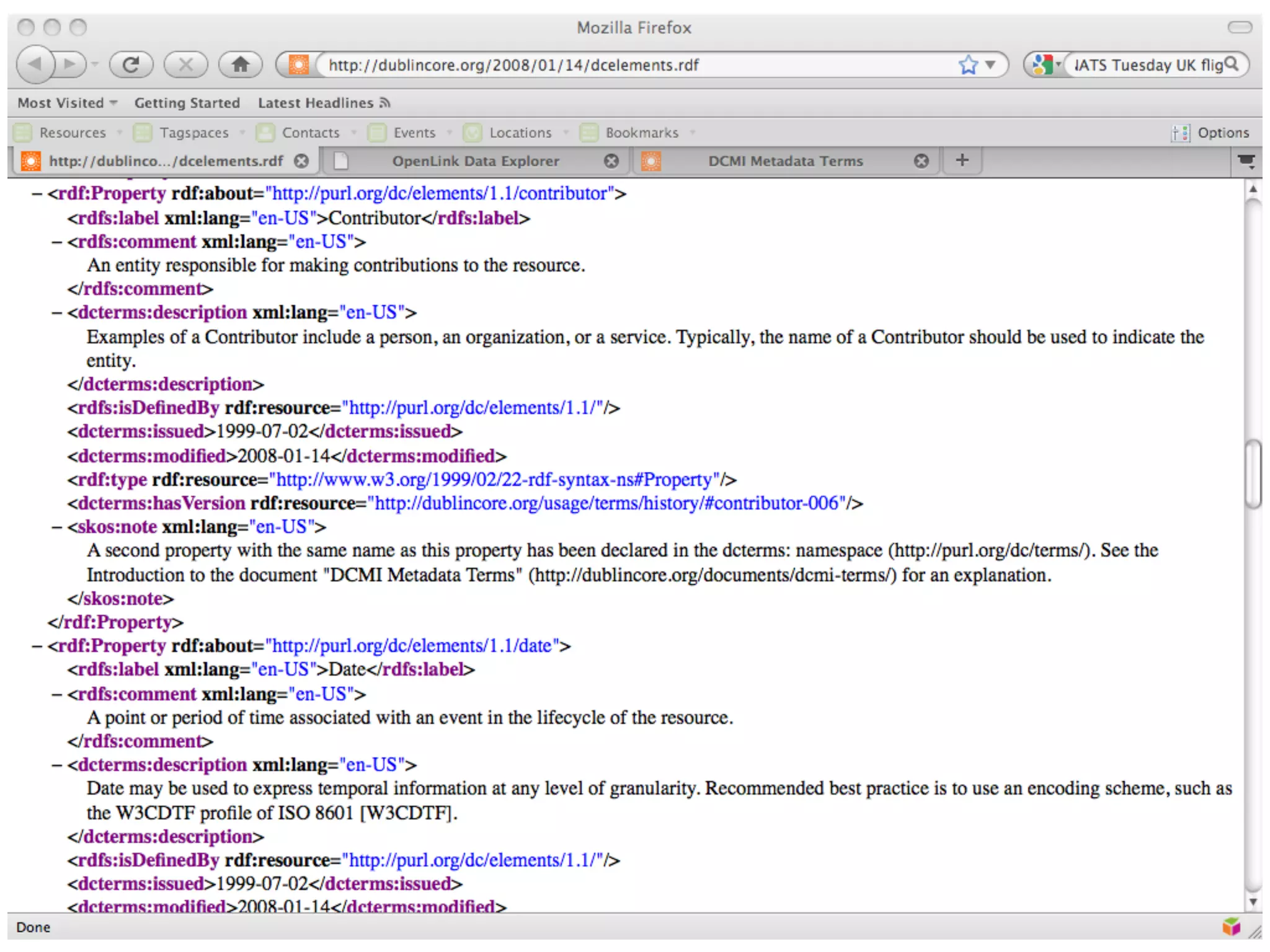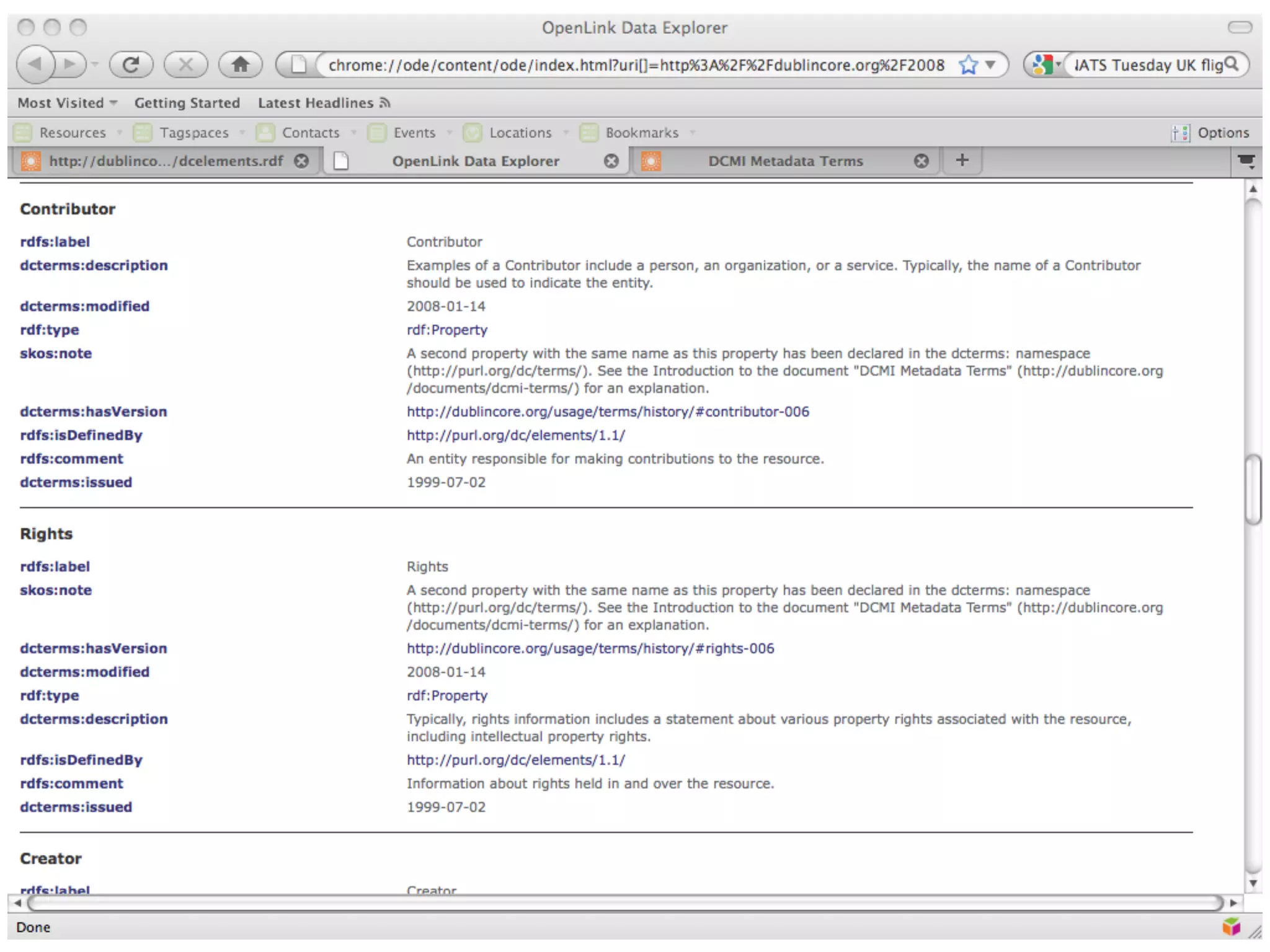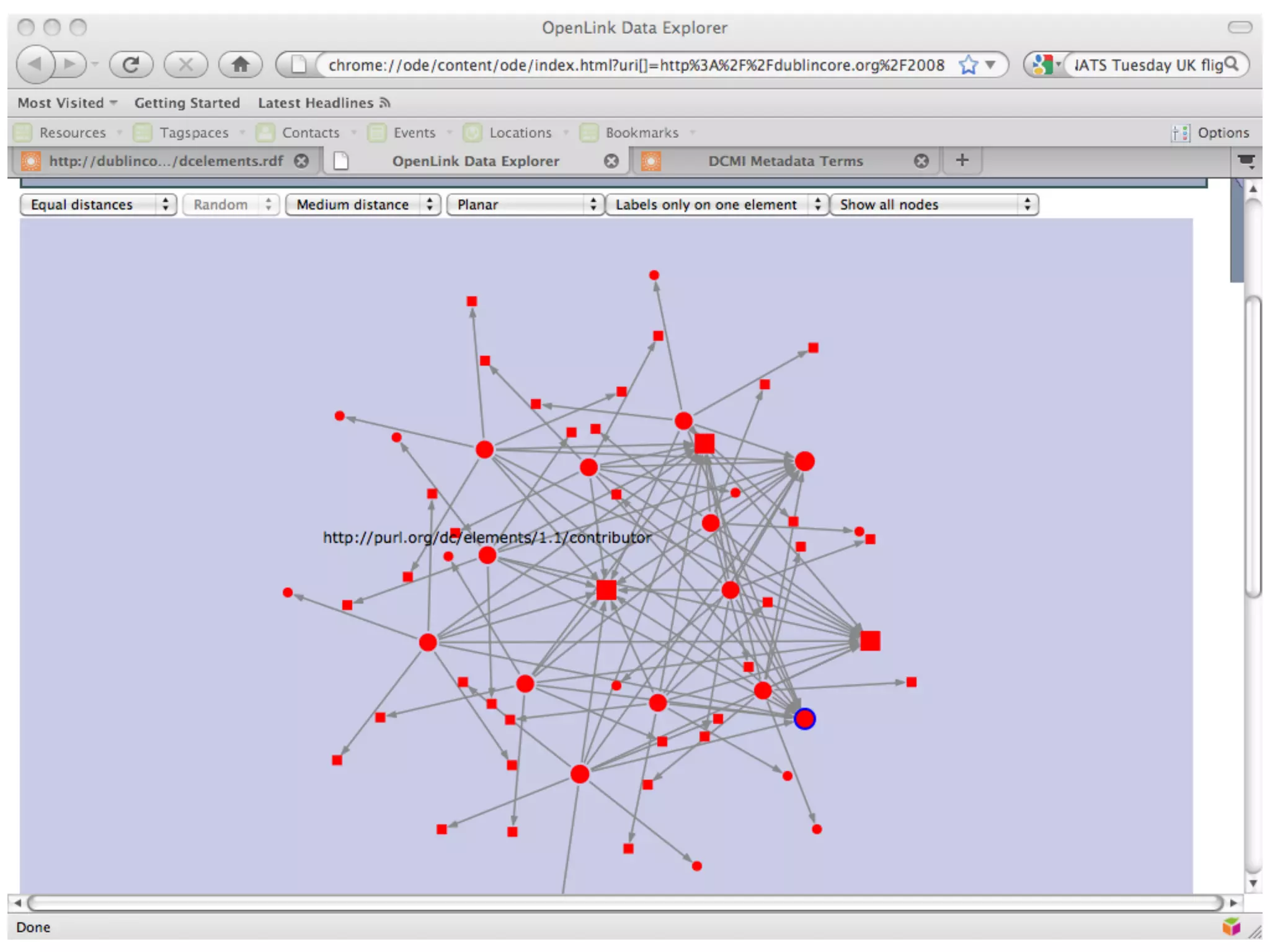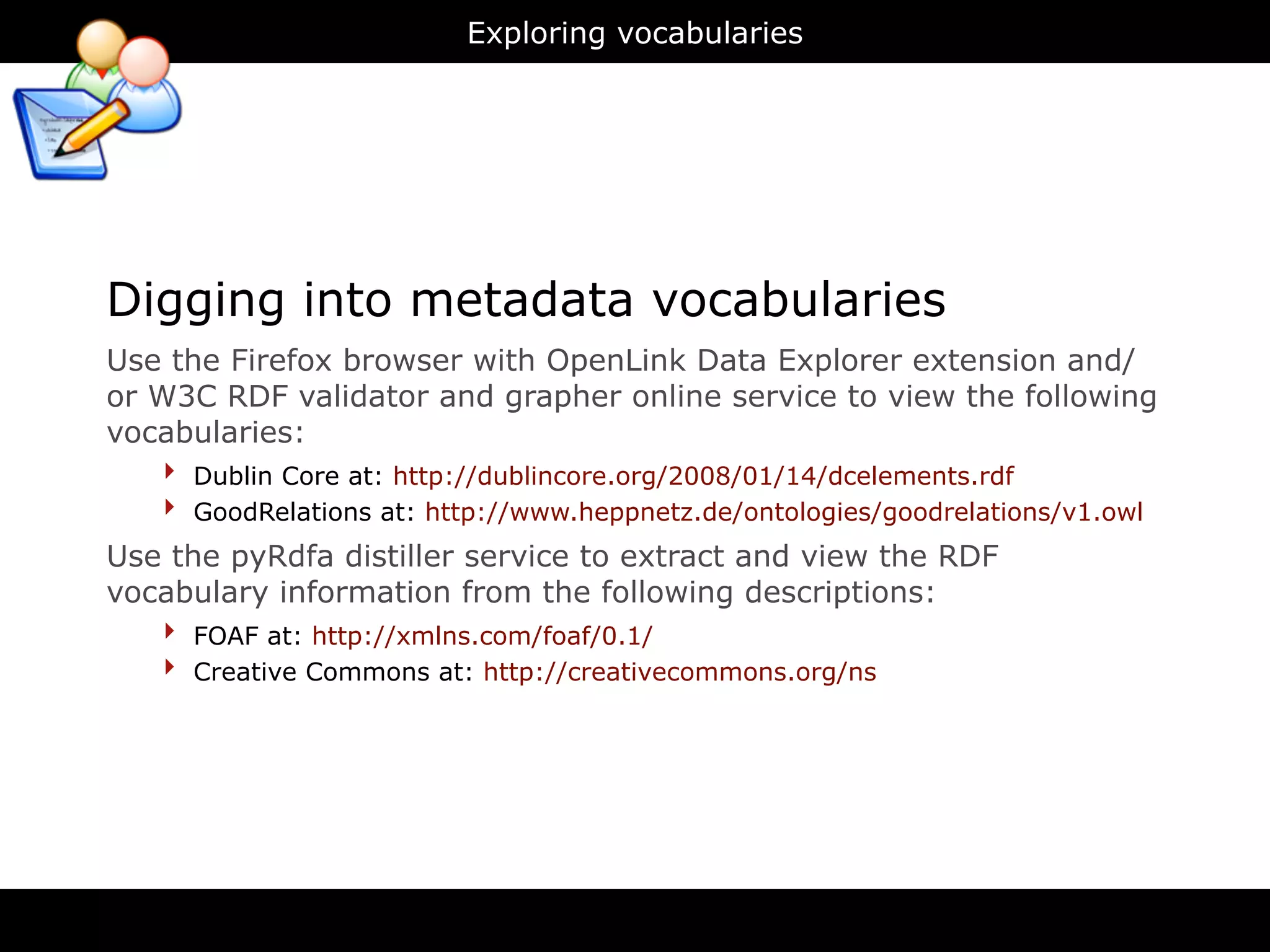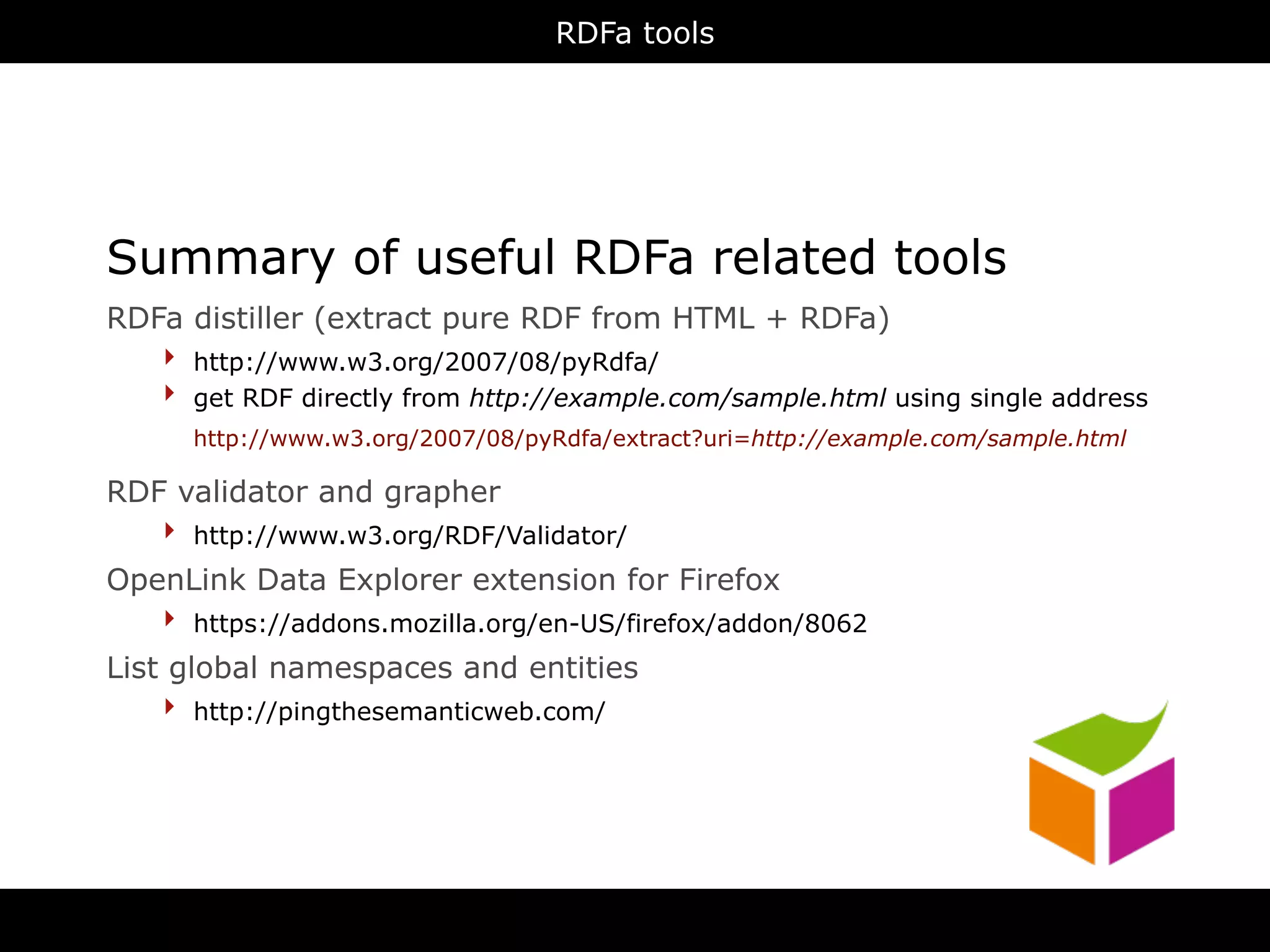RDFa is a method for embedding Rich Data Formats metadata within HTML documents. It allows metadata like titles, descriptions and URLs to be added to HTML pages in a way that is readable both by humans and machines. The summary describes how RDFa works by defining resources with URIs and properties, and how this extracted data can be distilled and validated using various RDFa tools on the W3C website.
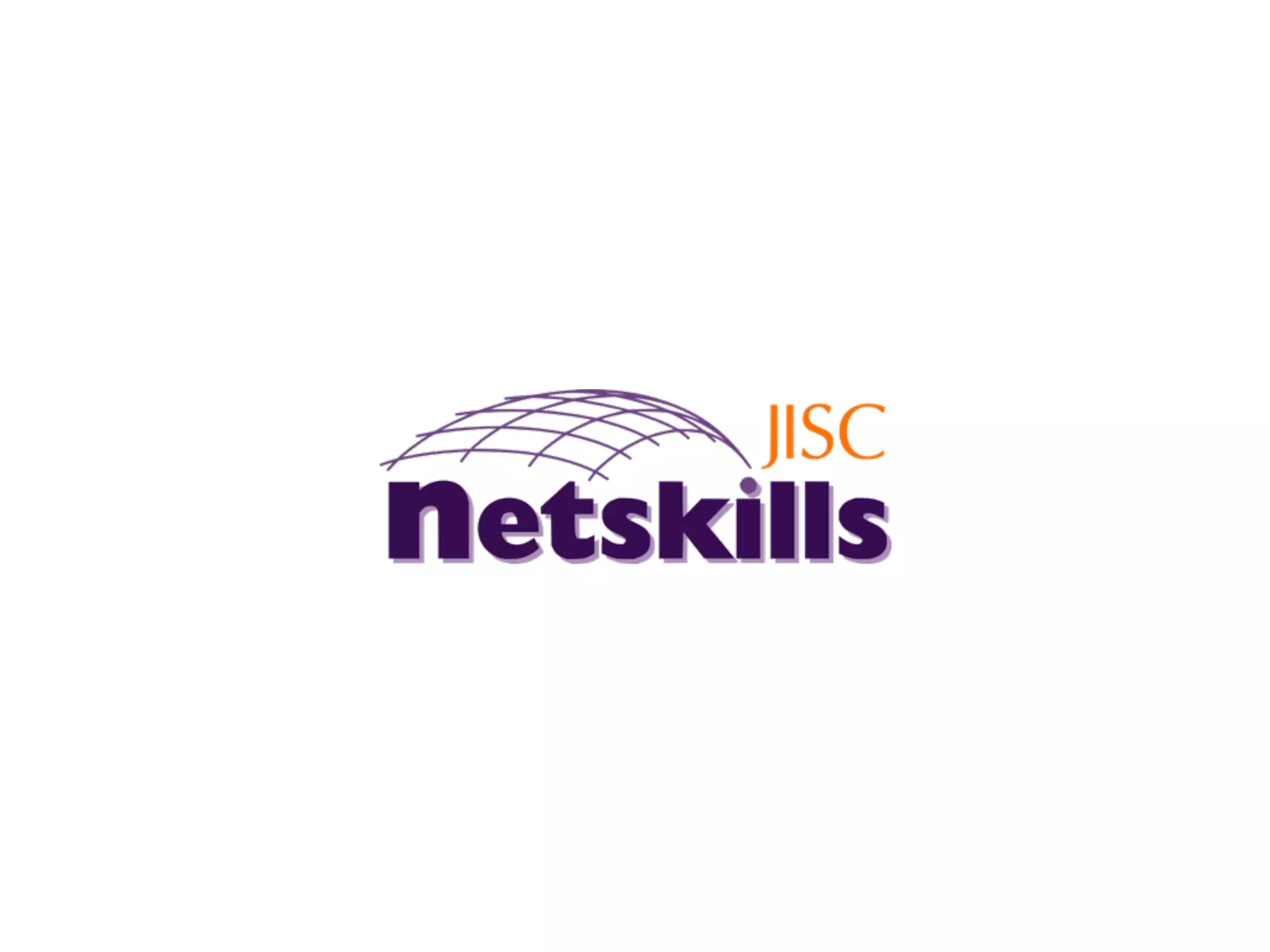
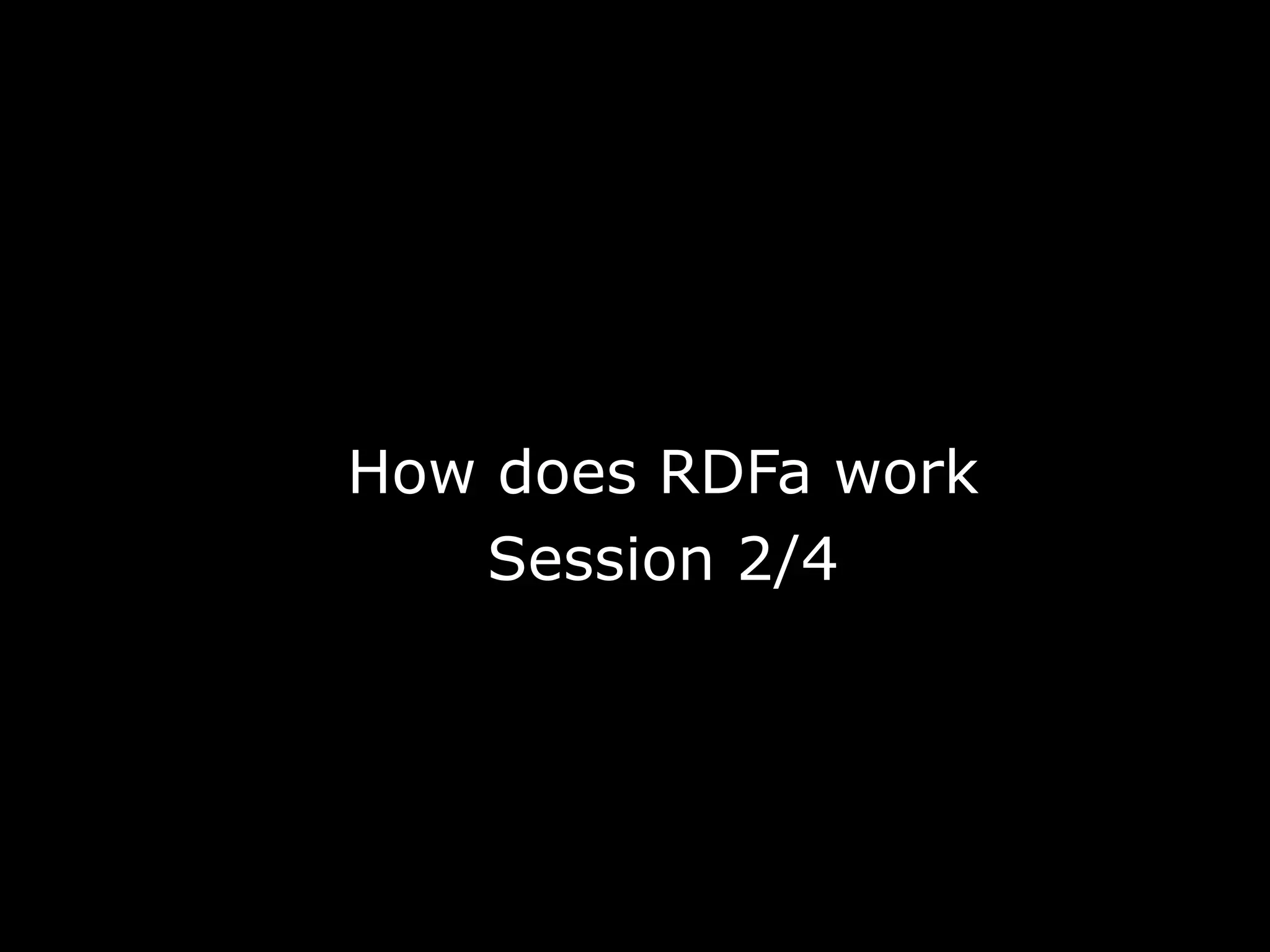
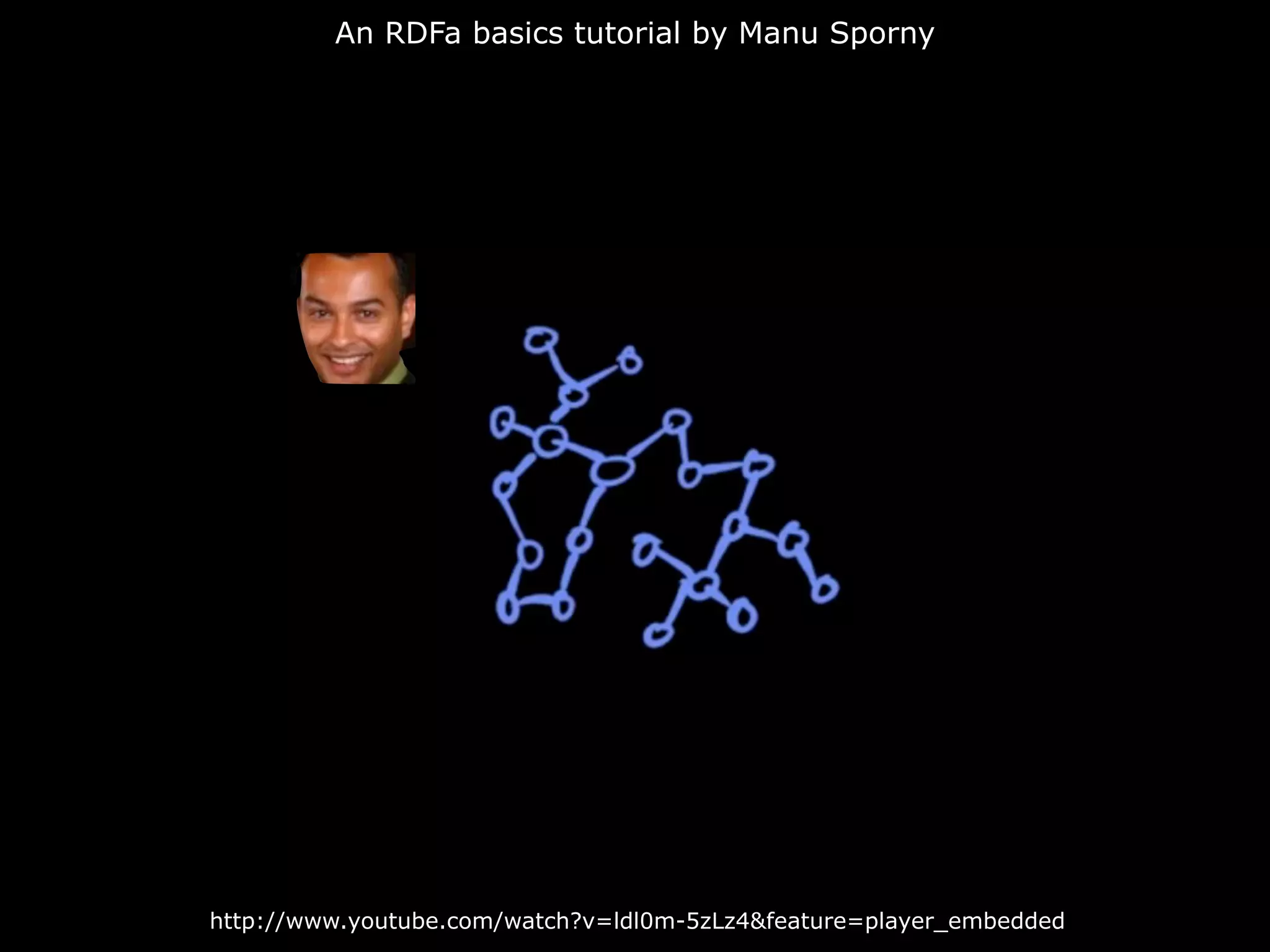
![Real metadata
Resource description framework
‣ RDF is a generic "way" of using definitive metadata with web resources.
‣ RDF describes "things" (entities, defined by uniform resource identifiers,
URIs) by assigning properties and corresponding values—statements are
known as "triples" consisting of [subject] [predicate] [object].
‣ The predicate URI usually references a term in a standard metadata
vocabulary, resulting in unambiguous meaning.
‣ Any part of the triple can be a URI and URIs can point to other URIs that can
be read using HTTP and extended (or related) in other web resources, thus a
scalable model and very flexible.
http://www.w3.org/TR/rdf-primer/ http://www.w3.org/RDF/](https://image.slidesharecdn.com/rdfa-02-100421181508-phpapp01/75/RDFa-Introductory-Course-Session-2-4-How-RDFa-4-2048.jpg)
